May 2010 Archives
In line with all my colour standardization jiggery pokery, I've developed a recipe for fun coloured hair dye. It's terribly exciting. It's easy, can be done with fairly readily available ingredients and applies well. The only major down side is that I haven't got the fixative properly sorted out yet, which means that it washes out far too quickly.
But I'll post a vague recipe anyway. It involves about a tenth of a gram of FD&C or D&C powder dyes, mixed to suit your tastes and diluted in about ten grams of hot water. Add a gram of citric acid to that. Take that liquid and mix it into a pile (around fifty grams) of cheap hand cream or conditioner. Either will do. The cream/conditioner just acts as a handy applicator for the dye. The citric acid is meant to be the fixative.
Below, day one of the dye job I got out of the above recipe. One wash, however, stripped a lot of the dye out. That may be because of overly hot water, a too-weak fixative, or the general difficulty of light shade of blue. A coloured conditioner can help keep it fresh, but really doesn't seep in enough to take the place of a good fixative. But I'll work on that and report back.
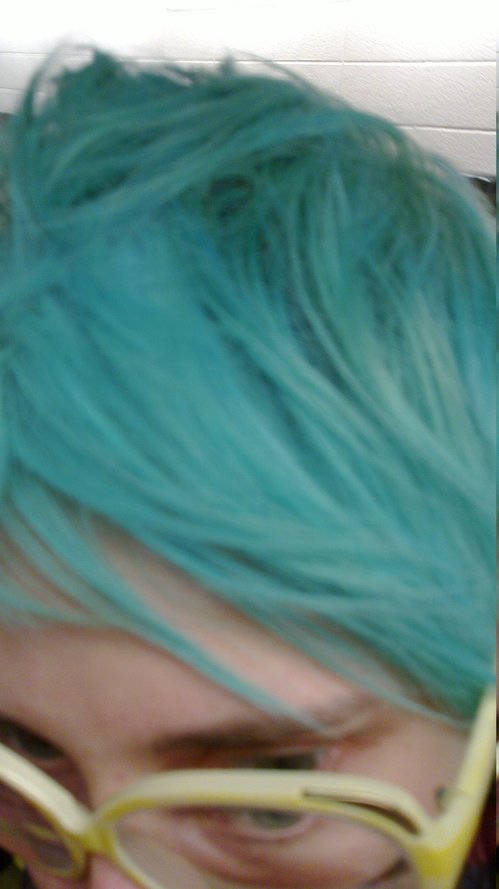
But I'll post a vague recipe anyway. It involves about a tenth of a gram of FD&C or D&C powder dyes, mixed to suit your tastes and diluted in about ten grams of hot water. Add a gram of citric acid to that. Take that liquid and mix it into a pile (around fifty grams) of cheap hand cream or conditioner. Either will do. The cream/conditioner just acts as a handy applicator for the dye. The citric acid is meant to be the fixative.
Below, day one of the dye job I got out of the above recipe. One wash, however, stripped a lot of the dye out. That may be because of overly hot water, a too-weak fixative, or the general difficulty of light shade of blue. A coloured conditioner can help keep it fresh, but really doesn't seep in enough to take the place of a good fixative. But I'll work on that and report back.

I've been slacking on my daily illustrations lately. I know it's not a very good routine if it isn't actually routine, but I'm remedying that. To go with my other cross sections of food, I'm working on figs. Figs are fascinating. They've got so much detail to them. So for the next few days, I'm going to draw and redraw the same fig, but differently every time. Without further ado, Fig 1:
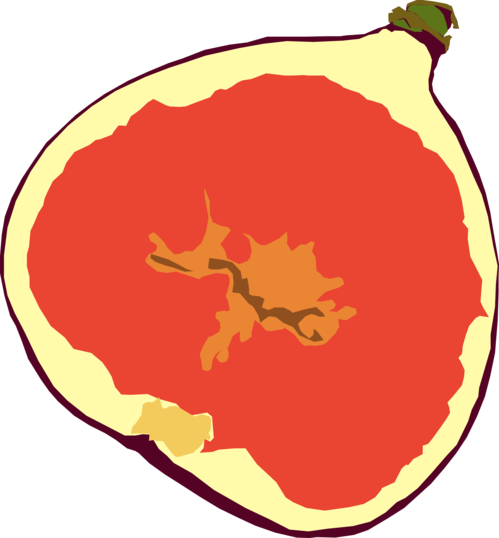

I'm working on a game. I hesitate to call it a video game. It's a game that involves websites, IRC, posters, physical space and a kind of backwards story arc or three. It's got at least one fictional charitable organization and three fictional software projects. Below, the two logos I'm happiest with so far: Pragma and NewBasic. I named the project NewBasic (partially after a language I made up when I was 15) without realizing that there is, in fact, an existing project with the same name. But that's okay, it goes along with the Pragma Directives in C and C++, which I also never knew about until just now. Such is life. Here are the logos. 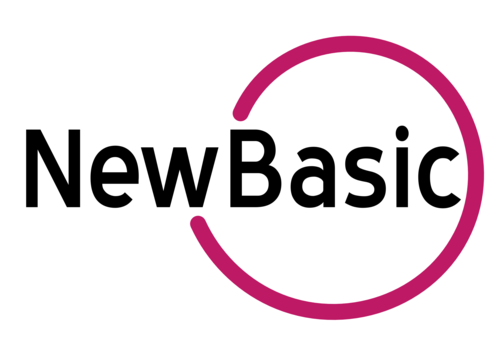
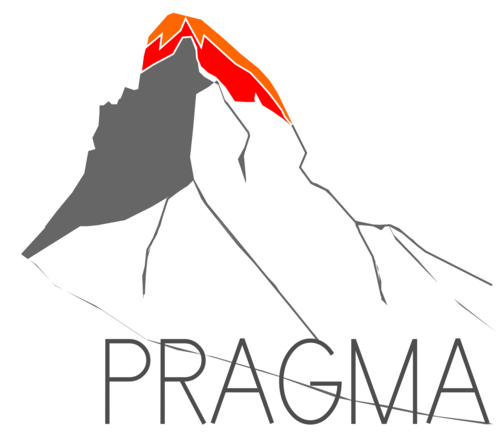


<pedantry>I've got a bee in my bonnet about language. People talk about making meals. That's fine. More often than not, there's some process of making involved in the preparation of a meal, whether it be cutting or cooking. But I'm wondering how far that stretches. The question here is cereal. In a dry cereal or instant oatmeal context, is it possible to accurately say that there's real making involved? Does pouring milk and cereal into a bowl really count as making? Short of activities like making granola from scratch, from the base grain, fruit and nut components, is there really such a thing as making cereal in the home? Are we taking credit for the making work done by unknown others at some cereal factory? The issue extends to tea, instant soup, frozen meals and other such prepared foods. But you get the idea, so I won't elaborate further.</pedantry>
For the first time since I ported the blog to Movable Type, I looked at my comment settings. Distressing! It turns out that only three types of account were allowed for log-ins, and not very common ones, either. Never fear, I've gone and ticked all the boxes. Now, if you use such common services as Google accounts, Open ID, Wordpress, Yahoo or AIM, you too can post comments.
Projecting movies and art on the sides of buildings is a little old hat. Everybody does it. This other idea, though, came to me in a dream a couple months back. In movies, real buildings stand in for something they're not. Consider Toronto city hall standing in as an enemy headquarters in a Jackie Chan movie, or an entire street in little, old downtown Guelph pretending to be WWII Germany in a made for TV movie. It's everywhere. I play a game, given the number of American movies shot in Toronto, where I look for buildings I know.
So here's the idea: project film depictions of buildings over top of the buildings themselves. Show that real building, with its normal, every day use, juxtaposed against what someone else has imagined it to be.
So here's the idea: project film depictions of buildings over top of the buildings themselves. Show that real building, with its normal, every day use, juxtaposed against what someone else has imagined it to be.
I have, once again, been fiddling around with yarn and dye. This time, the particular dye I've been fiddling with is FD&C, as well as D&C compliant dye. Practically, it means two things: it's a material specified and regulated heavily; and you can put it on your body without killing yourself, to a certain extent. Food colouring, at least in powder form, tends to be acid dye, which means that it's happier in the presence of acids like citric or even vinegar. This dye, together with a little citric acid, can colour cosmetics, animal protein (wool, silk, human hair) and lots of other things, including the paper towel pictured below (Hint: the numbers and letter written next to the splotches are their names: FD&C Green #3, FD&C Yellow #5, FD&C Blue #1, FD&C Red #40, D&C Red #33, D&C Green #8, D&C Green #5).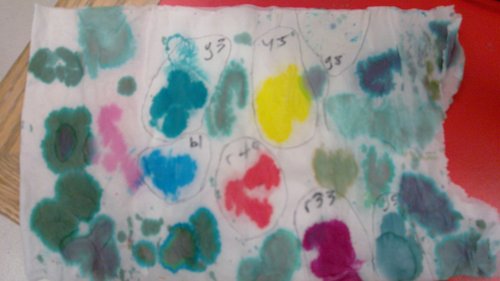 So, what exactly am I doing with this highly regulated, standardized dye which works on lots of things? Right now, I'm dying yarn. Give it a week and I'll be dying my hair. In the intervening time, I'll be breaking out my RGB sensor and capturing hex values for the yarn colours. I'm documenting pigment ratios, water temperature, water to pigment ratios, pigment to acid ratios and steeping time. All of this will go with those hex values I just mentioned. Together, they'll mean that anyone can convert an RGB colour into a physical yarn colour. Then I'll do the same for screen printing ink, then offset, then who knows what else. In the mean time, you can knit a sweater.
So, what exactly am I doing with this highly regulated, standardized dye which works on lots of things? Right now, I'm dying yarn. Give it a week and I'll be dying my hair. In the intervening time, I'll be breaking out my RGB sensor and capturing hex values for the yarn colours. I'm documenting pigment ratios, water temperature, water to pigment ratios, pigment to acid ratios and steeping time. All of this will go with those hex values I just mentioned. Together, they'll mean that anyone can convert an RGB colour into a physical yarn colour. Then I'll do the same for screen printing ink, then offset, then who knows what else. In the mean time, you can knit a sweater.
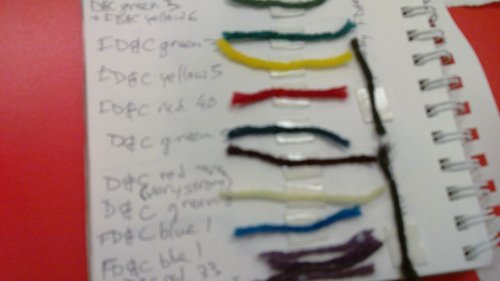
 So, what exactly am I doing with this highly regulated, standardized dye which works on lots of things? Right now, I'm dying yarn. Give it a week and I'll be dying my hair. In the intervening time, I'll be breaking out my RGB sensor and capturing hex values for the yarn colours. I'm documenting pigment ratios, water temperature, water to pigment ratios, pigment to acid ratios and steeping time. All of this will go with those hex values I just mentioned. Together, they'll mean that anyone can convert an RGB colour into a physical yarn colour. Then I'll do the same for screen printing ink, then offset, then who knows what else. In the mean time, you can knit a sweater.
So, what exactly am I doing with this highly regulated, standardized dye which works on lots of things? Right now, I'm dying yarn. Give it a week and I'll be dying my hair. In the intervening time, I'll be breaking out my RGB sensor and capturing hex values for the yarn colours. I'm documenting pigment ratios, water temperature, water to pigment ratios, pigment to acid ratios and steeping time. All of this will go with those hex values I just mentioned. Together, they'll mean that anyone can convert an RGB colour into a physical yarn colour. Then I'll do the same for screen printing ink, then offset, then who knows what else. In the mean time, you can knit a sweater.
I'll admit it: I have a silly name. But that's the name my parents gave me and I like it just fine. I realize that spelling it all lower case (ginger coons instead of Ginger Coons) makes it seem even stranger to a lot of people. Some people ask why I do that. Some people question whether or not my name is real. The best response I've ever seen was when someone put my name in quotation marks, as if they didn't believe in it at all. So let's talk about proper nouns and why capital letters are political, not just grammatical.
I'm an English speaker, born and raised. My second language is French. Maybe if I'd learned some German earlier, I wouldn't have such a problem with capitalization. In English and French, proper nouns are capitalized, to the exclusion of other nouns, common nouns. That means that, as I learned in grade school, CN Tower, Toronto and Ginger (the name, not the spice) are all supposed to be capitalized because they're important things, places or people. On the other hand, grass, bird and air are not capitalized. That's the heart of the issue. I have difficulty believing that the CN Tower and I are so much more important than birds and grass that we deserve mixed case while they don't.
Why, then, do I not just refuse all capital letters? It's because I only have the power to decide for myself. Sure, I believe that my name should be on an equal footing with all the common nouns of the world, but you may not feel that way and I'm pretty sure the City of Toronto doesn't feel that way either. So I don't capitalize any part of my name. And like the womyn, grrls and other mis-spellers before me, I believe that sometimes, politics should come before proper grammar, but always thoughtfully and for good reason.
I'm an English speaker, born and raised. My second language is French. Maybe if I'd learned some German earlier, I wouldn't have such a problem with capitalization. In English and French, proper nouns are capitalized, to the exclusion of other nouns, common nouns. That means that, as I learned in grade school, CN Tower, Toronto and Ginger (the name, not the spice) are all supposed to be capitalized because they're important things, places or people. On the other hand, grass, bird and air are not capitalized. That's the heart of the issue. I have difficulty believing that the CN Tower and I are so much more important than birds and grass that we deserve mixed case while they don't.
Why, then, do I not just refuse all capital letters? It's because I only have the power to decide for myself. Sure, I believe that my name should be on an equal footing with all the common nouns of the world, but you may not feel that way and I'm pretty sure the City of Toronto doesn't feel that way either. So I don't capitalize any part of my name. And like the womyn, grrls and other mis-spellers before me, I believe that sometimes, politics should come before proper grammar, but always thoughtfully and for good reason.
Almost a year ago, after Libre Graphics Meeting 2009, I started writing a blog post. It was meant to be a link to the video of my talk, as well as a post-mortem, detailing the thoughts provoked in me by LGM 2009. For some reason, I never finished the post. It's been sitting in my drafts folder for a year, waiting. Not knowing now exactly what I was thinking then, I can't finish it. But with LGM 2010 coming up quickly, I figured I should finally post this, before I try to write another post-mortem in a few weeks. So below, the post that was going to be called "A talk and a post-mortem."
I'm excited. I'm excited because exciting things are happening. I gave a talk last week at the Libre Graphics Meeting about the relationship between designers and Open Source (you can view a video of the talk here). What's really exciting is the response generated by that talk. As it turns out, developers are just as interested as I am in how their programs are used and why they aren't. With that in mind, I figured I'd do a rundown of my thoughts regarding some of the issues raised by the talk.
If we make it perfect, people will use it. This is a problematic assumption. It assumes that people can tell when they see a superior product. I wish this were the case. It also assumes that people will magically know that the superior product exists. Again, not a safe assumption. The analogy that I've been using to describe the issue is this: You've invented a zero emission water powered car. Instead of advertising, you park the car in front of your house and hope people driving past will see it. Even though you've created a product that is technically superior and could even solve a huge problem, very few people will find out, because you're not telling them loudly enough. This brings me to marketing.
In the minds of many, marketing is a very bad word. It connotes shifty, profit driven companies selling us things we don't need. But that doesn't need to be the case. As long as the Open Source world views marketing as something other people do, it will be. It doesn't need to be expensive, either. Open Source has done an amazing job of harnessing the power of programmers. If we could do the same with the creatives who make normal marketing work, we'd find ourselves with the resources we need to carry out beautiful, clever, cheap promotional initiatives. We just need to view it as a grassroots activity.
Grassroots is the third problem. In the same way that we view marketing as a bad word, we have a terrible idea of activism. We view it too much as a destructive, futile activity. As with marketing, it doesn't need to be that way. We know that adoption breeds adoption. And yes, the easiest way to get buzz for something is to get a big name talking about it. But we'll never get that break if we don't firs
I'm excited. I'm excited because exciting things are happening. I gave a talk last week at the Libre Graphics Meeting about the relationship between designers and Open Source (you can view a video of the talk here). What's really exciting is the response generated by that talk. As it turns out, developers are just as interested as I am in how their programs are used and why they aren't. With that in mind, I figured I'd do a rundown of my thoughts regarding some of the issues raised by the talk.
If we make it perfect, people will use it. This is a problematic assumption. It assumes that people can tell when they see a superior product. I wish this were the case. It also assumes that people will magically know that the superior product exists. Again, not a safe assumption. The analogy that I've been using to describe the issue is this: You've invented a zero emission water powered car. Instead of advertising, you park the car in front of your house and hope people driving past will see it. Even though you've created a product that is technically superior and could even solve a huge problem, very few people will find out, because you're not telling them loudly enough. This brings me to marketing.
In the minds of many, marketing is a very bad word. It connotes shifty, profit driven companies selling us things we don't need. But that doesn't need to be the case. As long as the Open Source world views marketing as something other people do, it will be. It doesn't need to be expensive, either. Open Source has done an amazing job of harnessing the power of programmers. If we could do the same with the creatives who make normal marketing work, we'd find ourselves with the resources we need to carry out beautiful, clever, cheap promotional initiatives. We just need to view it as a grassroots activity.
Grassroots is the third problem. In the same way that we view marketing as a bad word, we have a terrible idea of activism. We view it too much as a destructive, futile activity. As with marketing, it doesn't need to be that way. We know that adoption breeds adoption. And yes, the easiest way to get buzz for something is to get a big name talking about it. But we'll never get that break if we don't firs
Back when I was in grade eleven, I came close to failing French class. The teacher brought my mother and me in one morning before school and gave us a talking to. There was one thing that stuck: she called me smart but lazy. She wouldn't have minded, she said, if I were stupid and trying my best. It was the lack of effort that got to her. In the intervening years, I've thought a lot about her accusation. And I've not only come to terms with it, but embraced it.
Smart but lazy isn't a problem. Smart but lazy, if done right, is a kind of optimization. It's much like that old saw, "work smart, not hard." If applied properly, in conjunction with a little drive to actually get the job done, smart but lazy works. That's the trick to it, though. You have to actually want to get the job done. My younger application of smart but lazy wasn't actually smart. It was lazy and disinterested. I didn't care much for French and wasn't particularly interested in getting the job done. Today's incarnation of smart but lazy, on the other hand, relies on the assumption that I actually want to accomplish something. With that assumption in mind, smart but lazy can be good. It can lead to optimizing the amount of work that goes into a project. With an end goal, the ideal application of smart but lazy results in a shorter timeline and less stress. That's smart laziness.
Smart but lazy isn't a problem. Smart but lazy, if done right, is a kind of optimization. It's much like that old saw, "work smart, not hard." If applied properly, in conjunction with a little drive to actually get the job done, smart but lazy works. That's the trick to it, though. You have to actually want to get the job done. My younger application of smart but lazy wasn't actually smart. It was lazy and disinterested. I didn't care much for French and wasn't particularly interested in getting the job done. Today's incarnation of smart but lazy, on the other hand, relies on the assumption that I actually want to accomplish something. With that assumption in mind, smart but lazy can be good. It can lead to optimizing the amount of work that goes into a project. With an end goal, the ideal application of smart but lazy results in a shorter timeline and less stress. That's smart laziness.
Eight days ago, with help, I built an 8'x8'x8' cube out of 4"x4" lumber. Seven days ago, again, not alone, I covered that cube with nine yards of 8' wide cotton fabric. The whole thing sat, briefly, in an otherwise ugly parking space in front of my studio. It was meant to be a walled garden, to match the walled gardens in front of other nearby units. I put some planters in and had plans to cover the cracked tarmac with decorative gravel or even a whole lot of soil and plant life. A day after the frame was built and skinned, I went out of town for a meeting. By the time I got back, there was a terse note on my front door, instructing me to tear down the garden by today or have it torn down for me. One day ago, in two hours, with yet more help, I tore down what took two days to build. There's once more a parking space in front of my studio, in which people will idle and throw cigarette butts and in which garbage will collect, until I sweep out and tidy up again. So here's to my garden, which took two days to build, two hours to take down and which managed to incense building management so much that when I called to ask about the note, I got yelled at and hung up on. It's documented below.
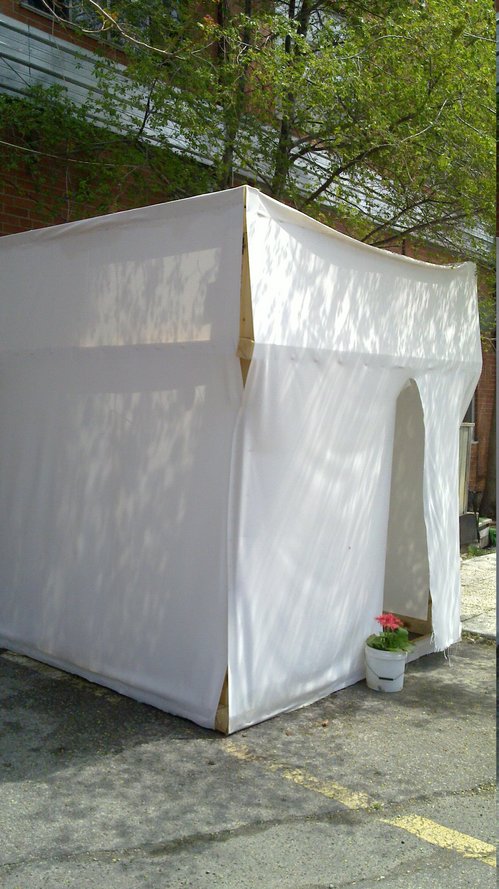

About a year and a half ago, I wrote about the idea of an unbranded grocery store (original post here). The point, condensed, was that grocery stores have become more about brand than food and are full of mentally jangling visual noise. The idea, then, was to have a grocery store entirely stocked with unbranded food. That means food in plain containers with only name, country of origin, nutritional information and ingredients. Today, I looked back at that old post and decided to sketch what the packaging might look like for those unbranded foods. Below, labels for unbranded red lentils and vegetable soup.
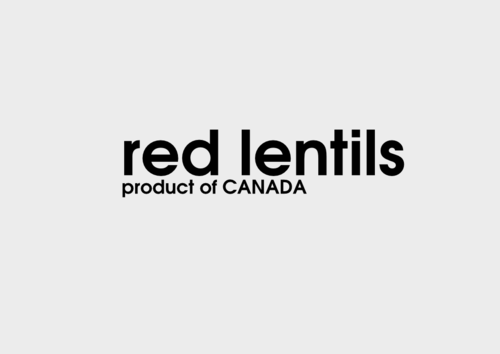
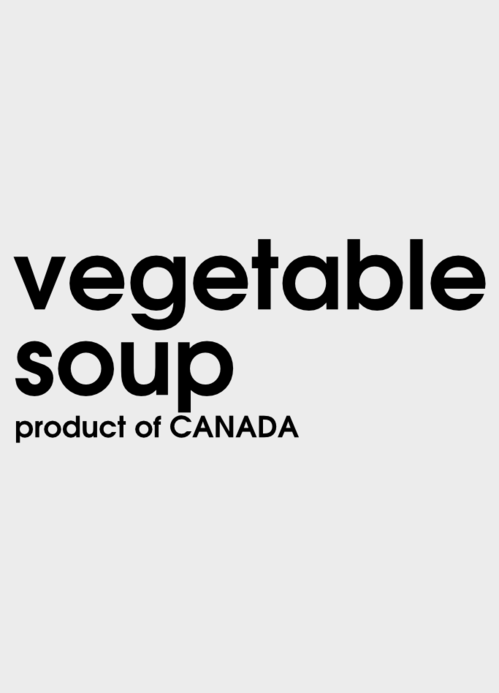


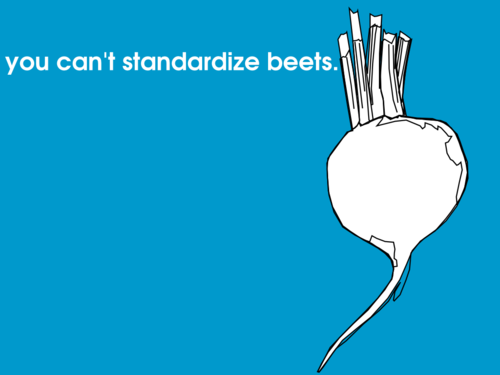
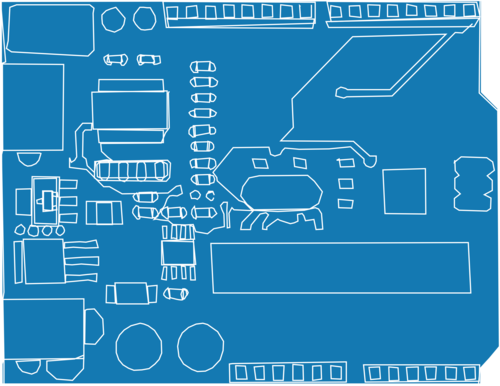
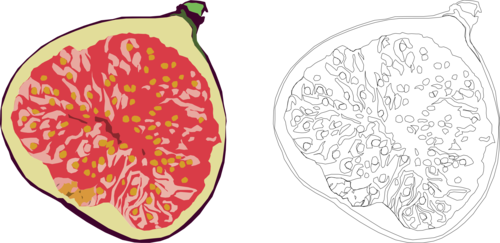
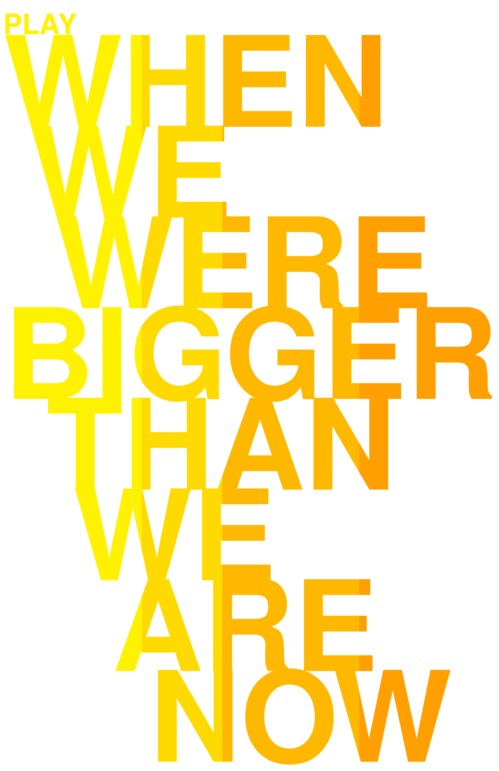
![Reblog this post [with Zemanta]](http://img.zemanta.com/reblog_e.png?x-id=52b53ac2-0872-4019-a407-6ffde245e325)
![Reblog this post [with Zemanta]](http://img.zemanta.com/reblog_e.png?x-id=7a994660-ed6f-4e09-8301-056d10c3c05a)
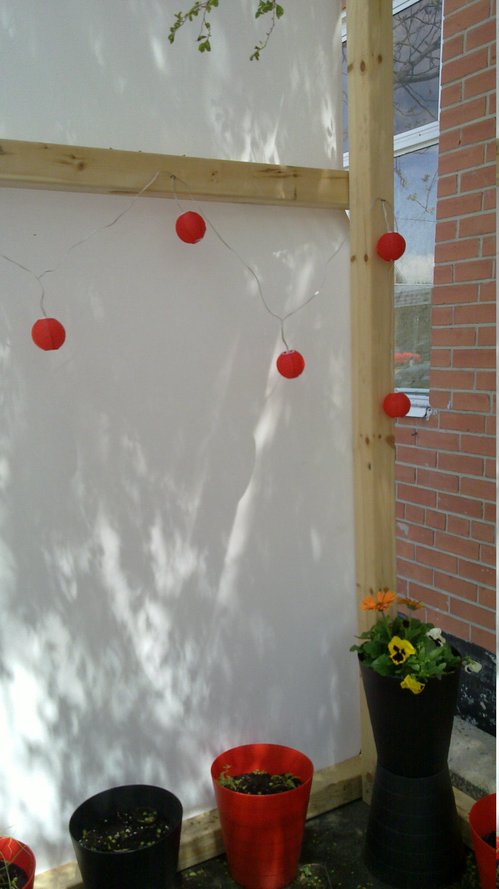
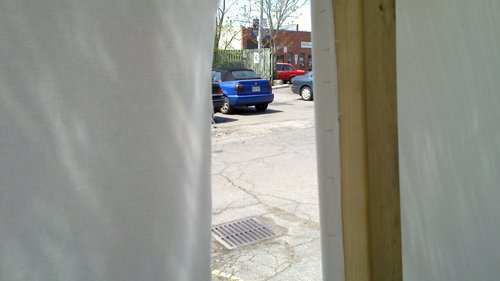
![Reblog this post [with Zemanta]](http://img.zemanta.com/reblog_e.png?x-id=73f033cb-e492-440c-9f08-405422f17d4d)